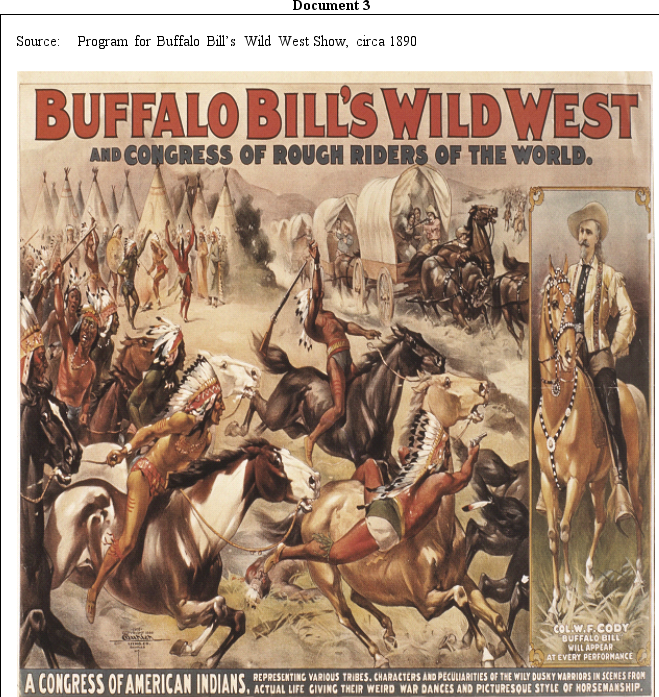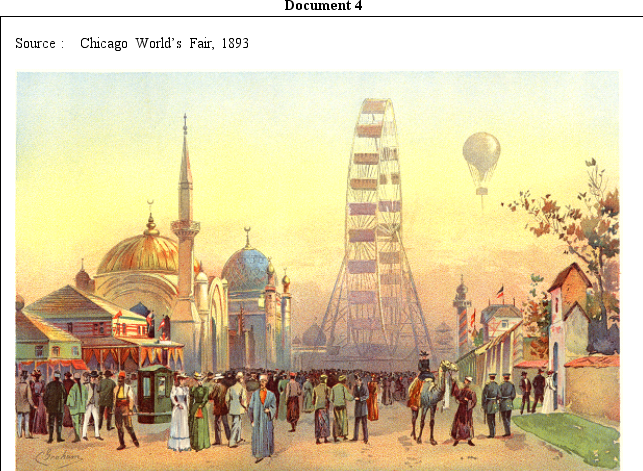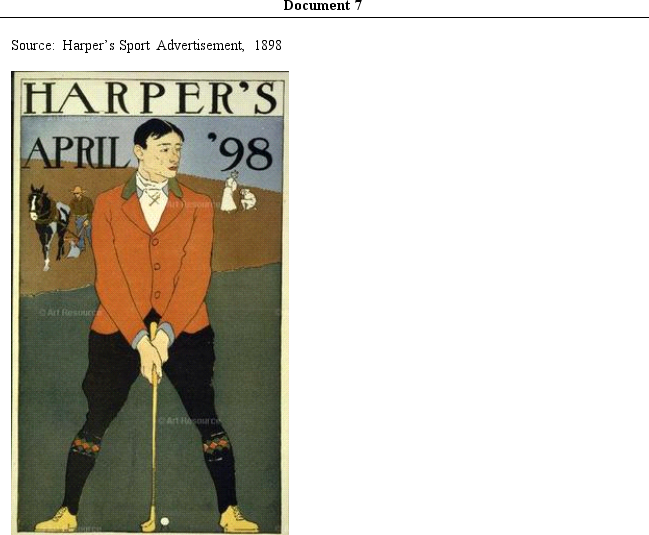DOCUMENT BASED
DBQ Directions
Directions: These questions are based on the accompanying documents.The documents have been edited for the purpose of this exercise.
In your response you should do the following:
•State a relevant thesis that directly addresses all parts of the question.
•Support the thesis or a relevant argument with evidence from all,or all but one,of the documents.
•Incorporate analysis of all,or all but one,of the documents into your argument.
•Focus your analysis of each document on at least one of the following: intended audience,purpose,historical context,and/or point of view.
•Support your argument with analysis of historical examples outside the documents.
•Connect historical phenomena relevant to your argument to broader events or processes.
•Synthesize the elements above into a persuasive essay that extends your argument,connects it to a different historical context,or accounts for contradictory evidence on the topic.
-To what extent did new cultural trends lead to social change in America from 1870 to 1900?
Document 1
Source: Frederick Law Olmstead, 1871
Compare advantages in respect simply to schools, libraries, music, and the fine arts. People of the greatest wealth can hardly command as much of these in the country as the poorest work-girl is offered here in Boston at the mere cost of a walk for a short distance over a good firm, clean pathway, lighted at night and made interesting to her by shop fronts and the variety of people passing.
Document 2
Source : “An Essay about Kindergarten, Modernism, and the Value of Women’s Work,” Margaret Wertheim, 2003
Properly conducted, Froebel believed that education for the very young would enable the flowering of human potential, for kindergarten was literally the garden of children where growing buds might unfurl and bloom. “By education,” he declared, “the divine essence of man should be unfolded, brought out, lifted into consciousness.” For Froebel, the education of children was nothing less than a holy duty, “a necessary, universal requirement” that was beginning to assert itself as the birthright of all humanity. 
JT Vintage/ZUMA Press/Newscom
Field Museum Library/Getty Images
Document 5
Source: The San Francisco Call, July 26, 1896
SAN FRANCISCO BICYCLE RIDERS AS DISCIPLES OF PROGRESS.
Enthusiastic Outpouring of Devotees of the Wheel Who Are Determined on Improving the City's Thoroughfares—Fully One Hundred Thousand Spectators Viewed the Parade.
BICYCLISTS of every age, race, sex and color—bicyclists from every stratum of cycledom, from the scorcher with his interrogation-point hump to the hoary-headed patriarch biker, sitting in military erectness on an antique 60-pounder wheels—in short, everybody who could claim any degree of proficiency in managing a wheel, turned out last night to take part in the great demonstration in favor of good streets. Such a parade as last night's has never before greeted the eyes of San Franciscans and it was estimated that at least 100,000 spectators lined the streets. The number of wheelmen who started with the procession is estimated to have been at least 5000. They came from every direction on wheels and every stage of decoration and thronged filled streets in the vicinity of Twenty-second and Folsom until even the pedestrians could scarcely move.
Document 6
Source: Scott Joplin, “Maple Leaf Rag,” 1898
Ragtime musician Scott Joplin completed his masterpiece, “The Maple Leaf Rag,” while in Sedalia in 1898, and a year later local music store owner John Stark published the spirited composition. Named after a local saloon, the “Maple Leaf Rag” is probably the most enduring melody from the ragtime era and sold over a half-million copies within a decade of its release. Joplin’s huge success with this piece led to his being named the “King of Ragtime,” and his music set the standard for the musical genre. Although it had yet to be named, ragtime was first introduced in 1893 at the World’s Colombian Exposition in Chicago. The music, first known as ”jig piano” and featuring jaunty melodies and syncopated rhythm, became widely known as ragtime by 1897. Many consider this style of piano playing to be the first uniquely type of American music.
Stock Sales WGBH / Scala / Art Resource
Definitions:
Owner's Capital
Represents the total equity belonging to the owners of a company or business, reflecting the net assets minus liabilities.
Accounts Receivable
Money owed to a company by its customers from sales or services rendered on credit, recorded as an asset on the balance sheet.
Accounts Payable
Liabilities of a business arising from credit purchases from suppliers, displayed on the company's balance sheet as money owed.
Assets Sold
The sale of company assets, which could include equipment, properties, or other resources owned by the company.
Q14: Within the Spanish settlements,slaves would find themselves<br>A)
Q27: The excerpt reflects all of the following
Q28: Jerry Falwell's message would have resonated most
Q36: Which of the following groups controlled Congress
Q42: Which of the following ideas provides the
Q49: Answer parts a,b,and c.<br>a)Identify and briefly explain
Q52: Advocates who supported Franklin's position (as seen
Q57: Which of the following is an on-the-job
Q60: The single factor most consistently related to
Q111: Define change agent and describe where change